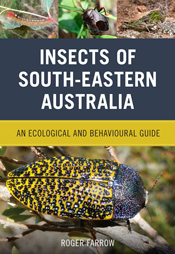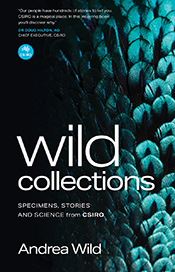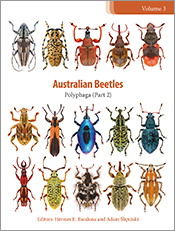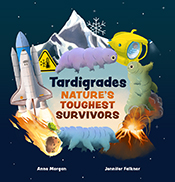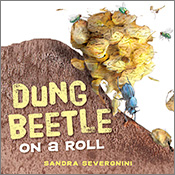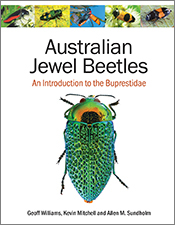Insects of South-Eastern Australia

An Ecological and Behavioural Guide
By: Roger FarrowA regional insect identification field guide based on feeding category and host plant.
A walk in the bush reveals insects visiting flowers, patrolling the air, burrowing under bark and even biting your skin. Every insect has characteristic feeding preferences and behaviours. Insects of South-Eastern Australia is a unique field guide that uses host plants and behavioural attributes as the starting point for identifying insects. Richly illustrated with colour photographs, the different species of insects found in Australia’s temperate south-east, including plant feeders, predators, parasites and decomposers, are presented. + Full description
The guide is complemented by an introduction to the insects of the region, including their environment, classification, life history, feeding strategies and behaviour. Fascinating boxes on camouflage, mimicry and many other topics are also included throughout. Whether you are a field naturalist, entomologist or just want to know what’s in your backyard, Insects of South-Eastern Australia will help you to identify the insects most likely to be encountered, as well as understand the basics of their ecology and behaviour.
Recipient of a 2016 Whitley Award commendation for Illustrated Guide
- Short descriptionReviews
"This guide will have appeal across a full spectrum of readers, non-specialist and specialists alike - from gardeners, nurserymen and bushwalkers to land care persons and professional entomologists. The book will become an indispensable item in your field kit bag, but the addition of a weatherproof protective cover is strongly recommended!"
Alan Hyman, Metamorphosis Australia, 2016
"unlike some field guides, this particular book is relatable and pragmatic... the reader can easily identify species in the field based on the behaviour and habitat they observe, rather than just relying on their own taxonomic prowess. It also means that emerging entomological enthusiasts and budding bug beholders can easily read up on what insects they're likely to find where, and just what they are likely to be doing there."
Chris McCormack, Wild Melbourne (blog), 23 August 2016
"The photos are good and plentiful and give this book much appeal. It should prove useful for identifying many eucalypt forest and woodland insects in the region extending from Adelaide to Brisbane and beyond."
Tim Low, Wildlife Australia, Winter 2016, pp. 48-49
"[Sorting] the species initially by functional group rather than leaping straight into the taxonomic order... encourages the observation of behaviours and characteristics that are invaluable for understanding the insects and their lives. Perhaps that is the book's greatest virtue."
Ian Endersby, Victorian Entomologist, 46(4), August 2016, p. 87
Details
Paperback | May 2016 | $ 45.00ISBN: 9781486304745 | 288 pages | 215 x 148 mm
Publisher: CSIRO Publishing
Colour photographs
ePDF | May 2016
ISBN: 9781486304752
Publisher: CSIRO Publishing
Available from eRetailers
ePUB | May 2016
ISBN: 9781486304769
Publisher: CSIRO Publishing
Available from eRetailers
Features
- Provides a general regional insect guide to south-eastern Australia
- The use of host plants and feeding group to identify insects seen in the field
- Easy to use images of all life stages
- Fully identified host plants and locations
- Illustrated descriptions of a large range of insect behavioural phenomena.
Contents
PrefaceAcknowledgements
Introduction
Part 1: An ecological and behavioural approach to insect identification
Regional environments and where to find insects, focusing on the tablelands and ranges of south-eastern NSW
Defining an insect
An ecological and behavioural approach to insect identification
Insect mouth parts: adaptations to different feeding strategies
Insect classification: from species to order
The insect life cycle
Annual life cycle
Feeding strategies
Other attributes: behaviour and habitats
Constructions and domiciles
Part 2: Insects in their environment
The plant feeders
The predators
The blood feeders
Parasitoids
The decomposers
Non-feeding and perching insects
Appendices Glossary
References and further reading
Indexes
View the full table of contents (PDF).

